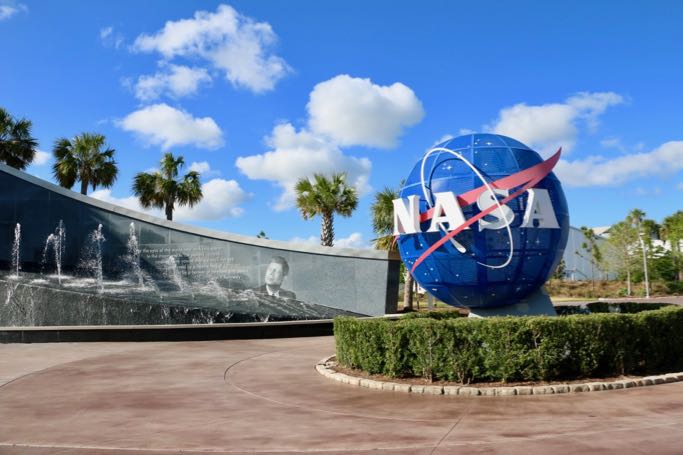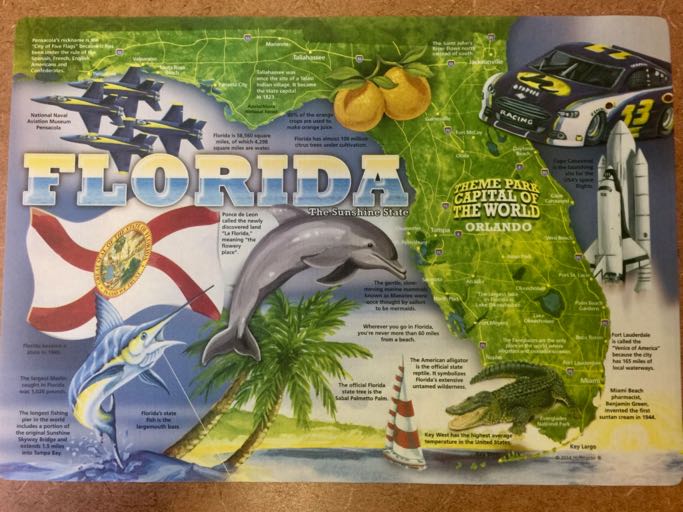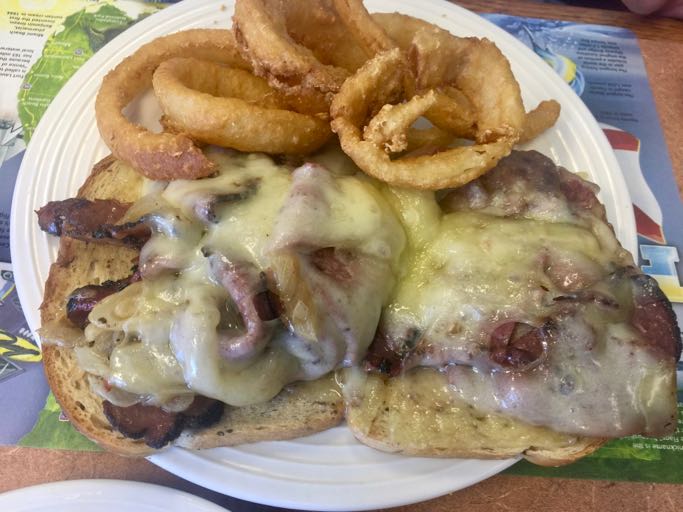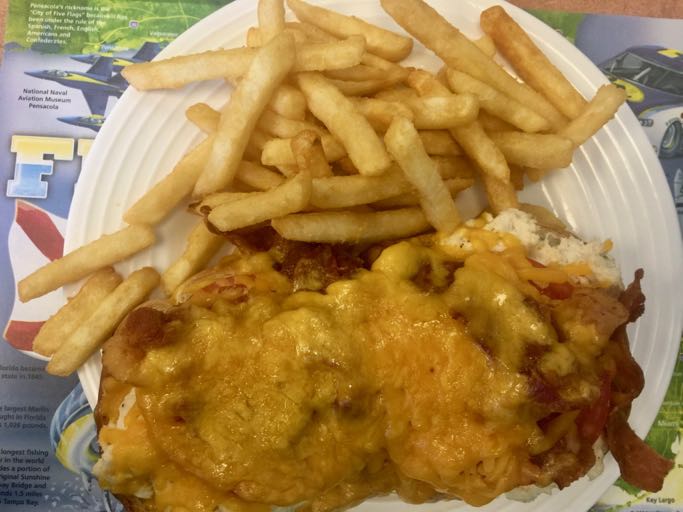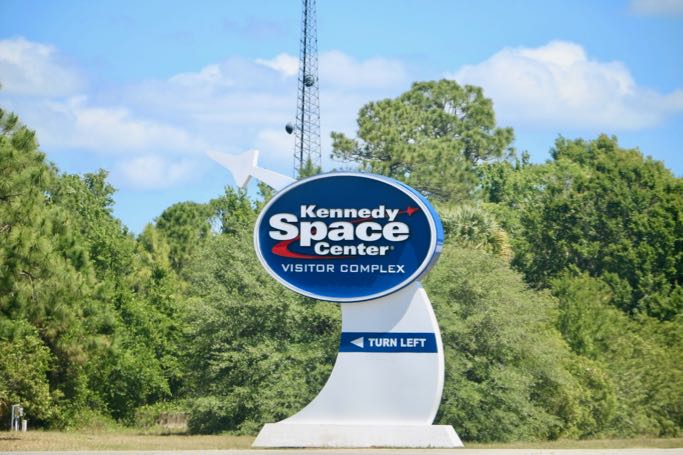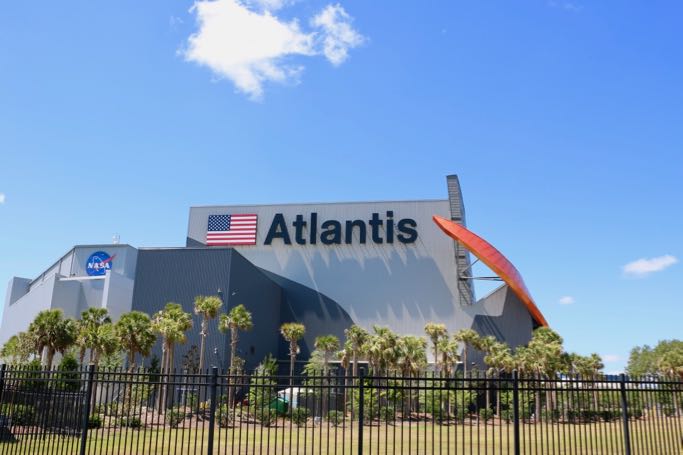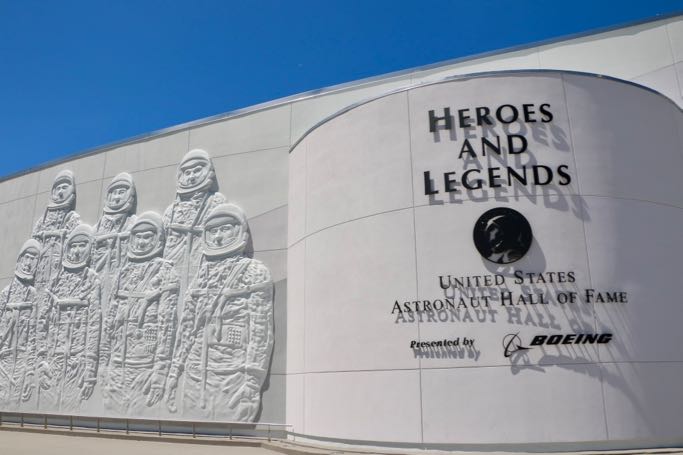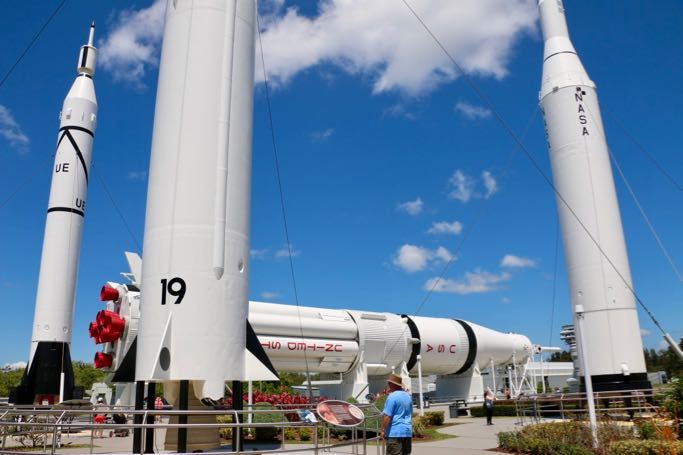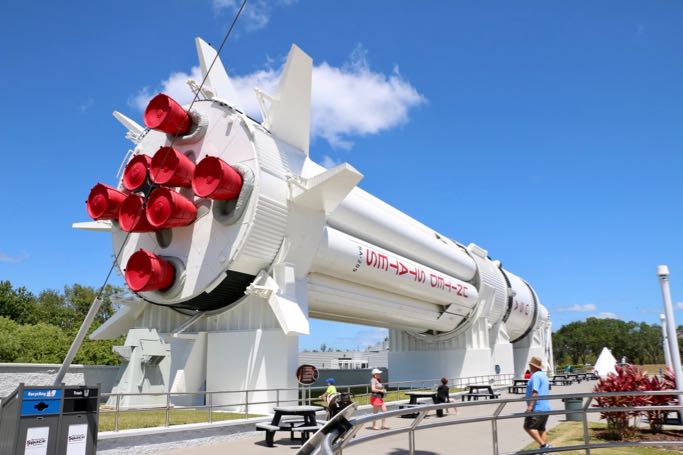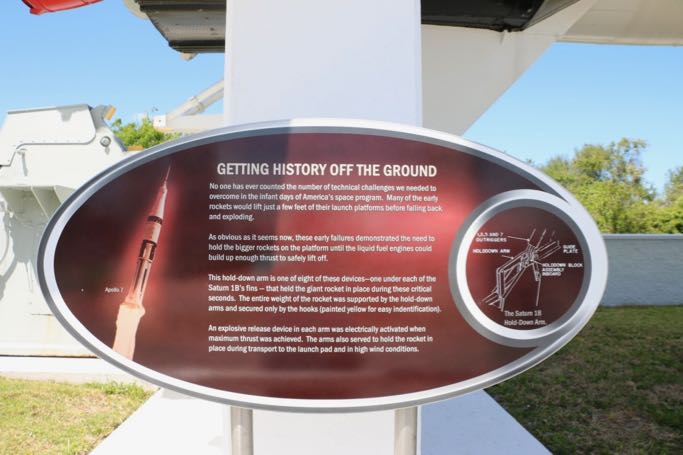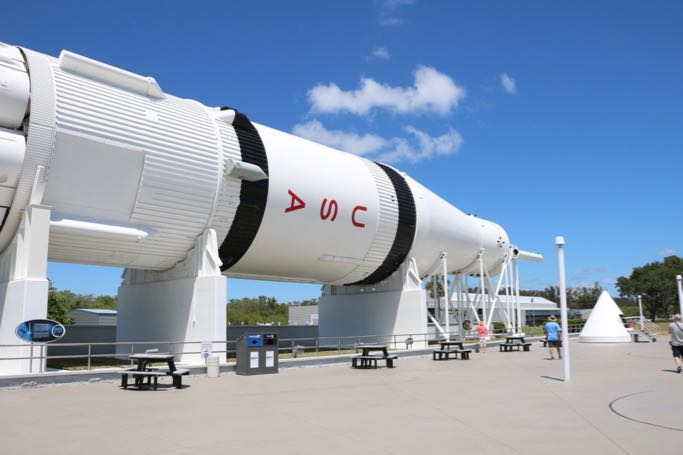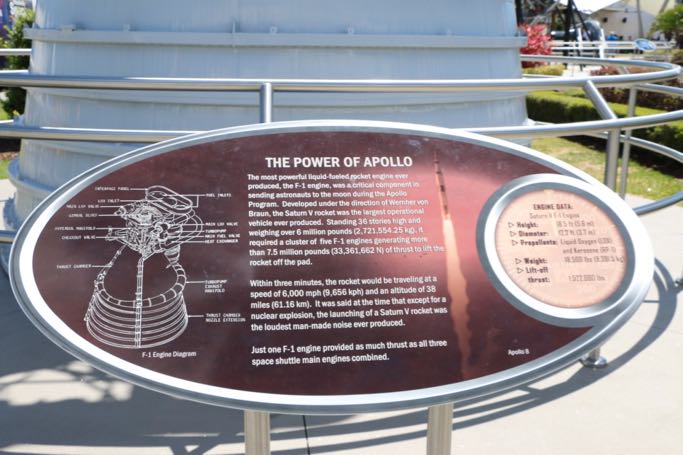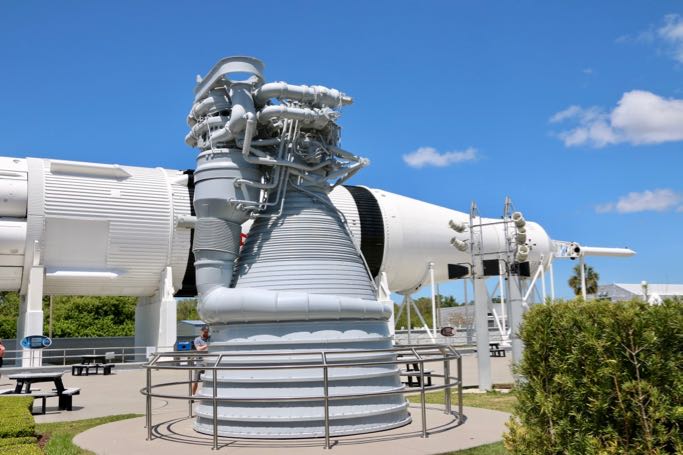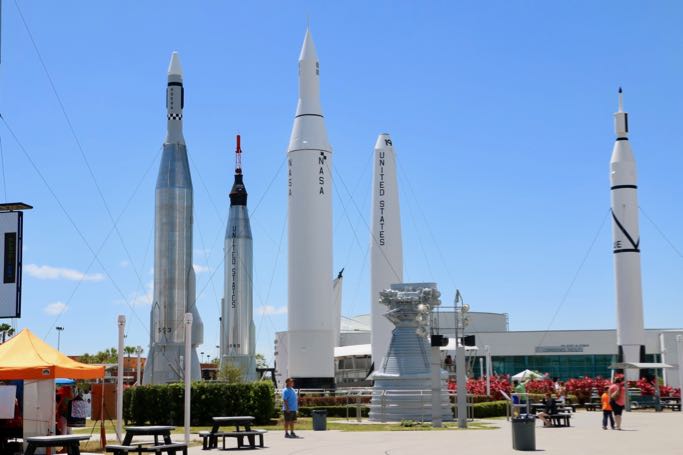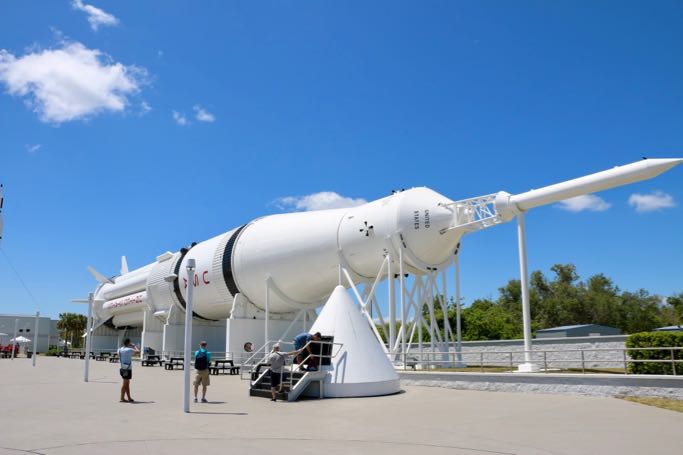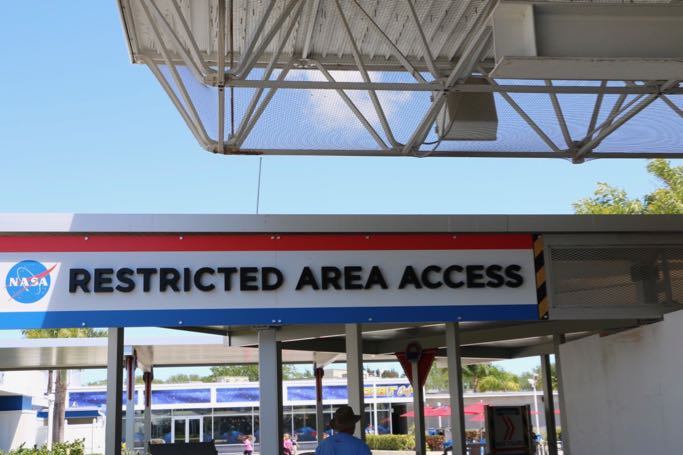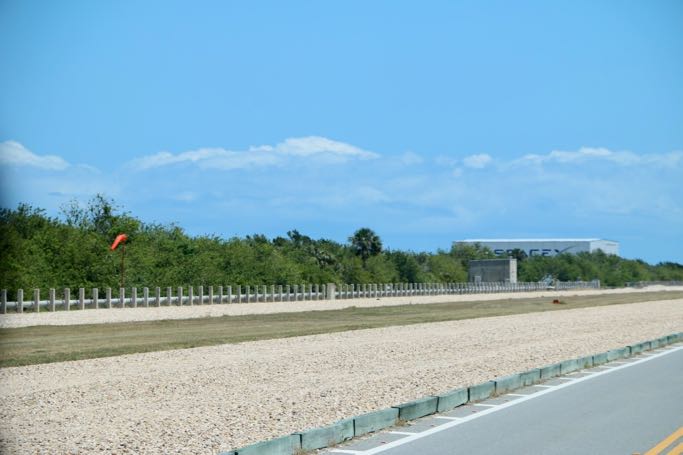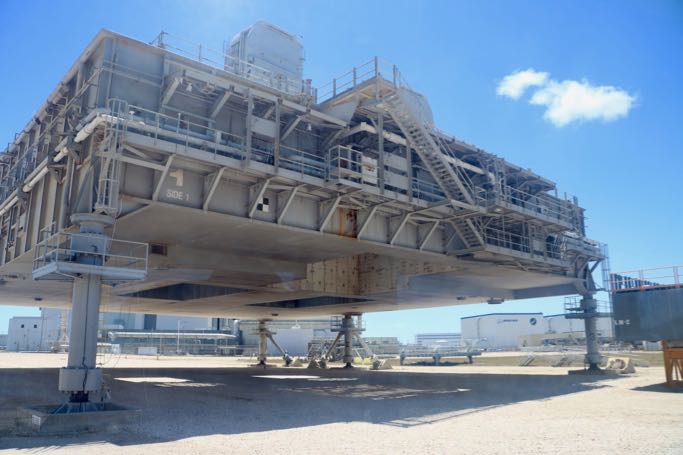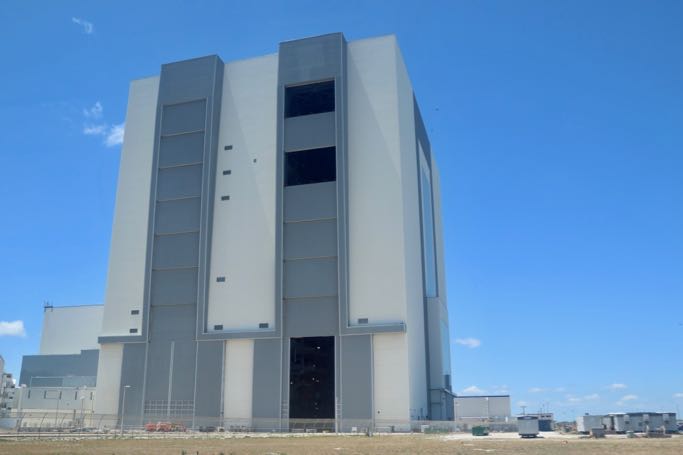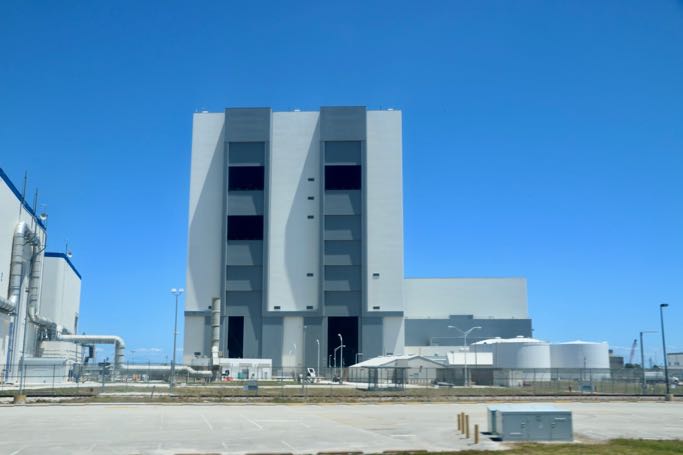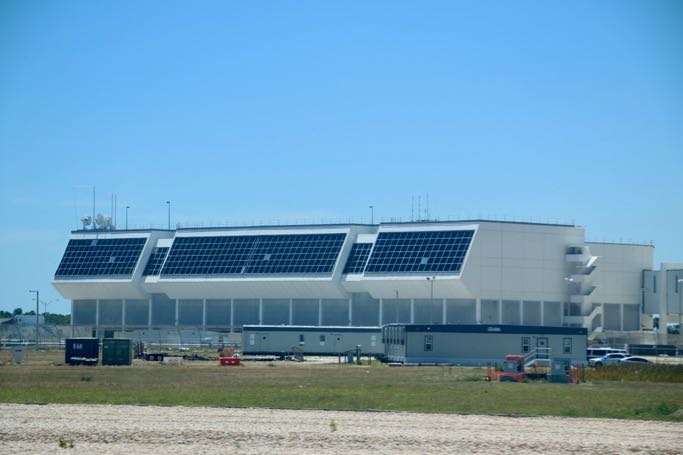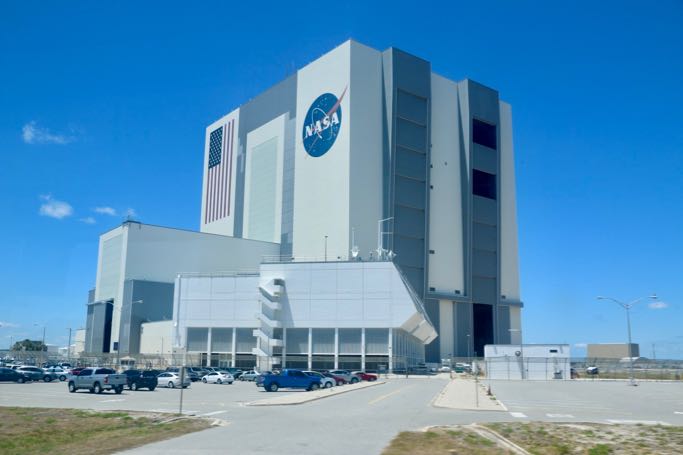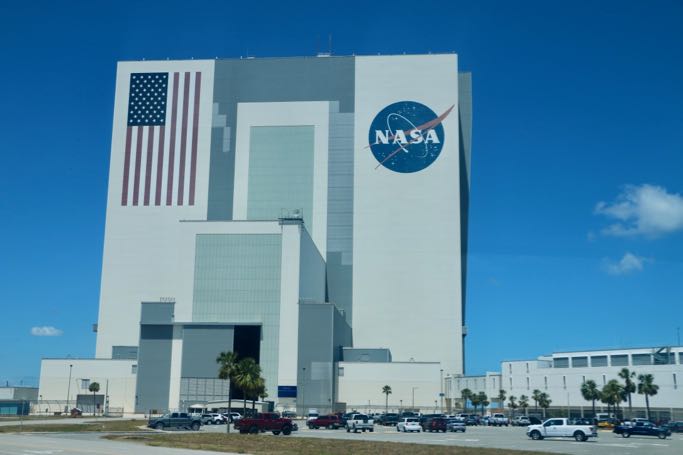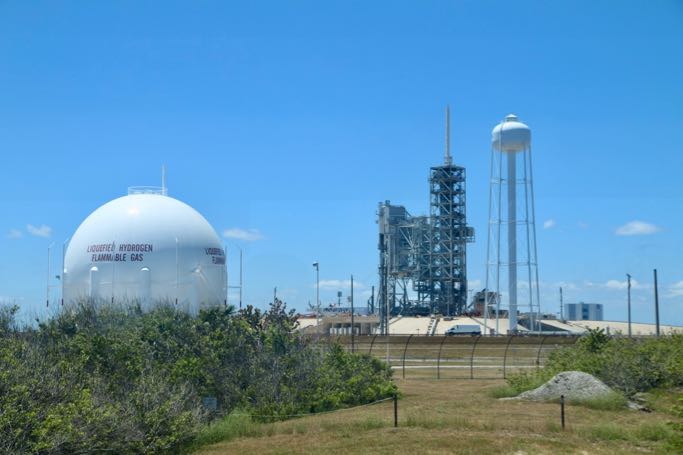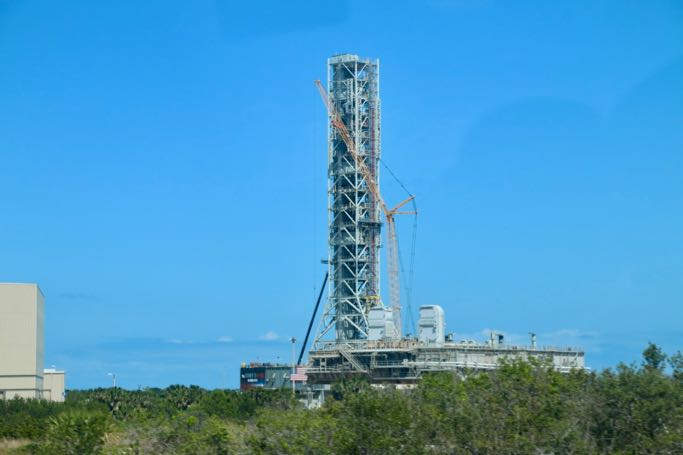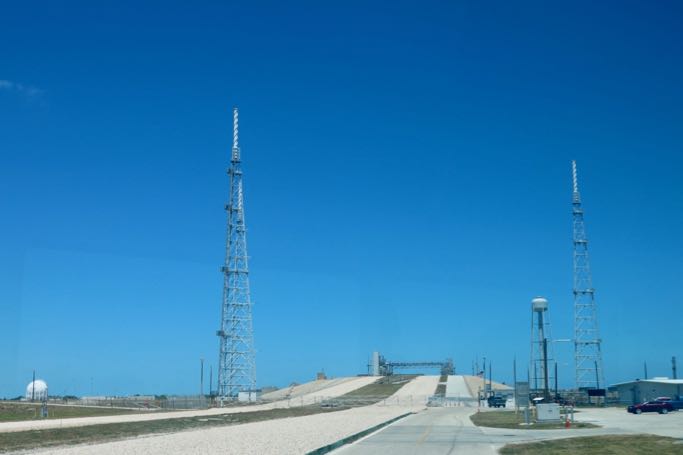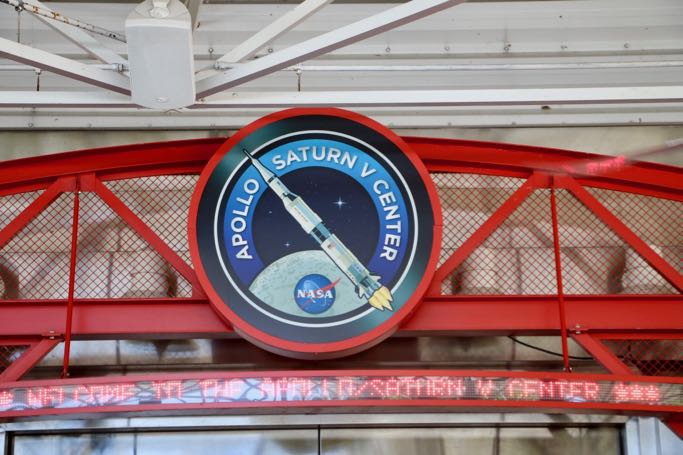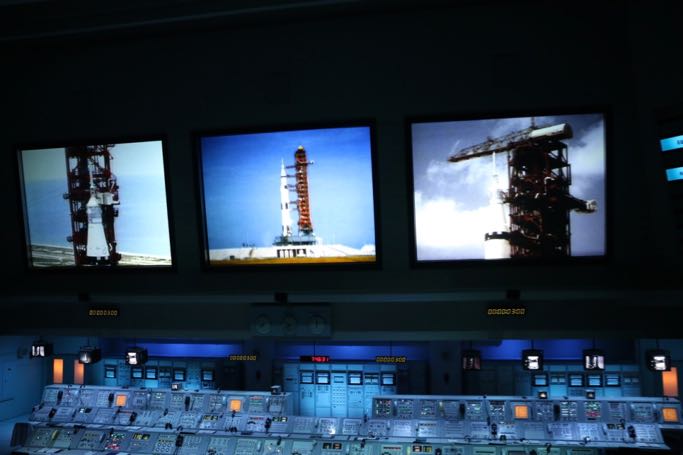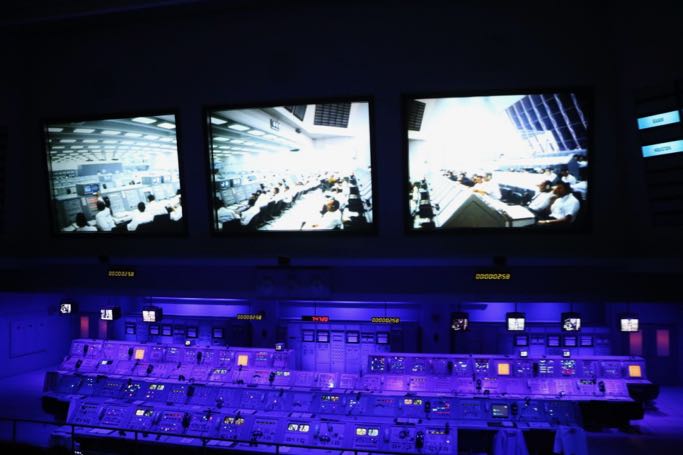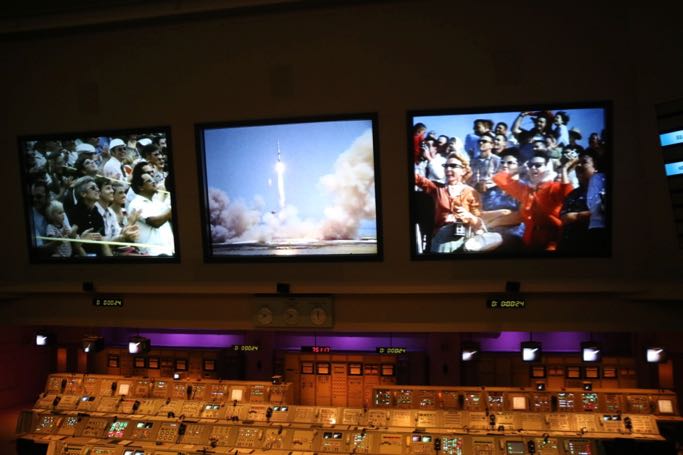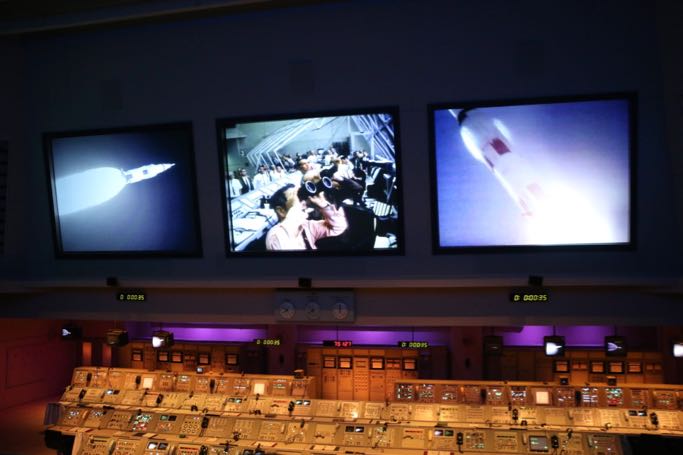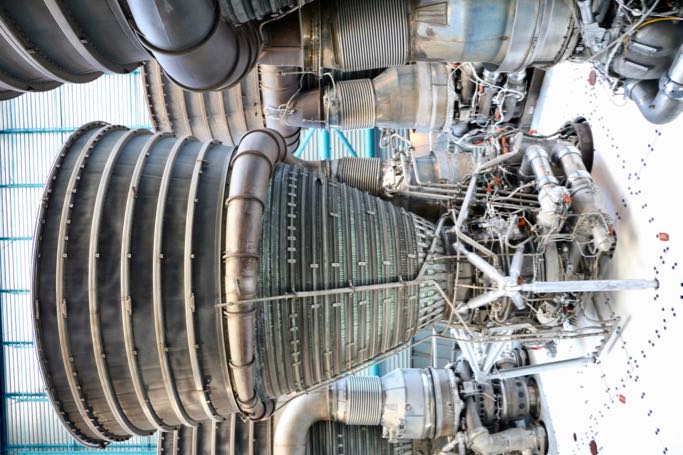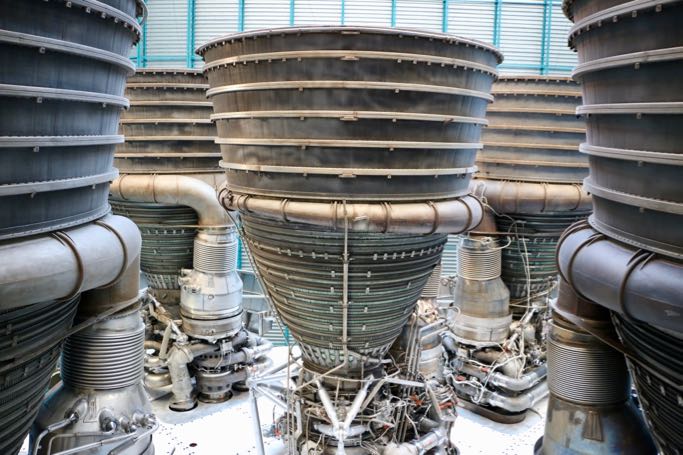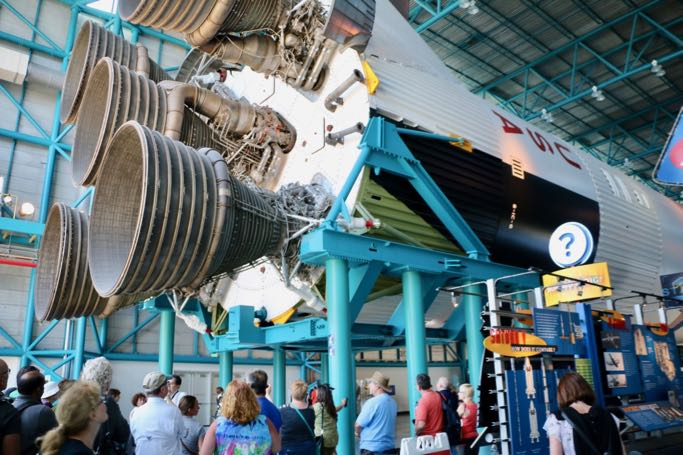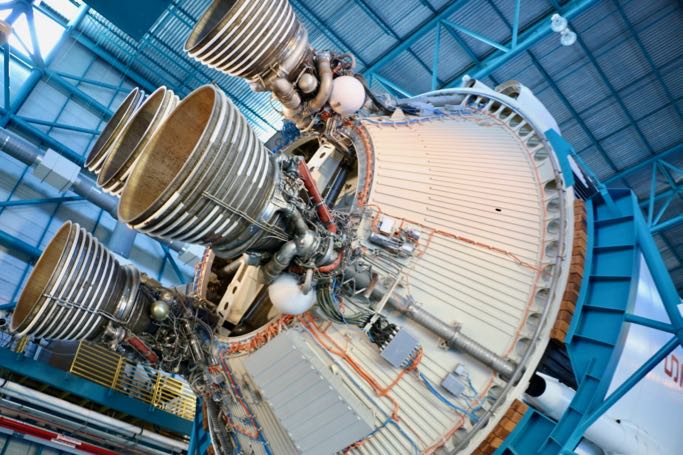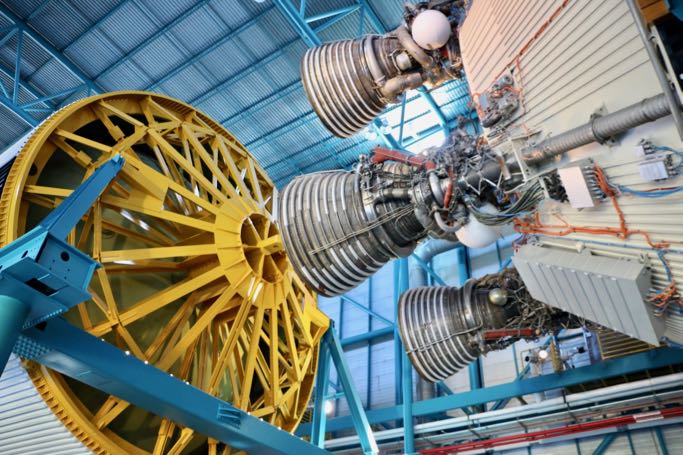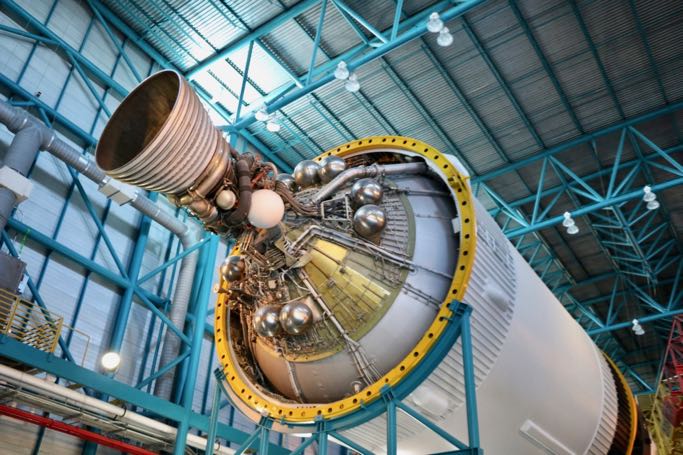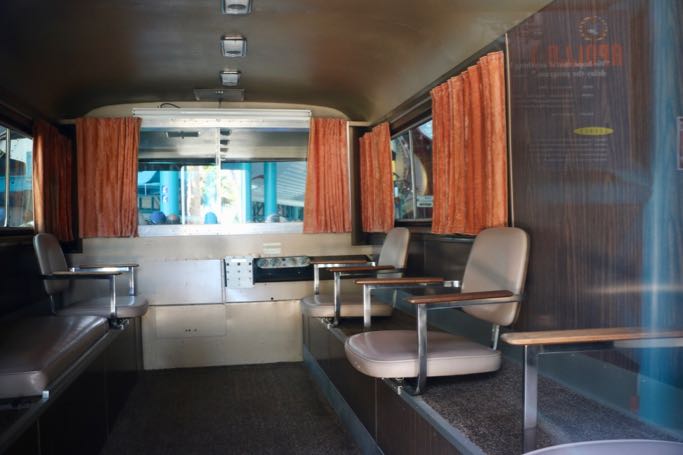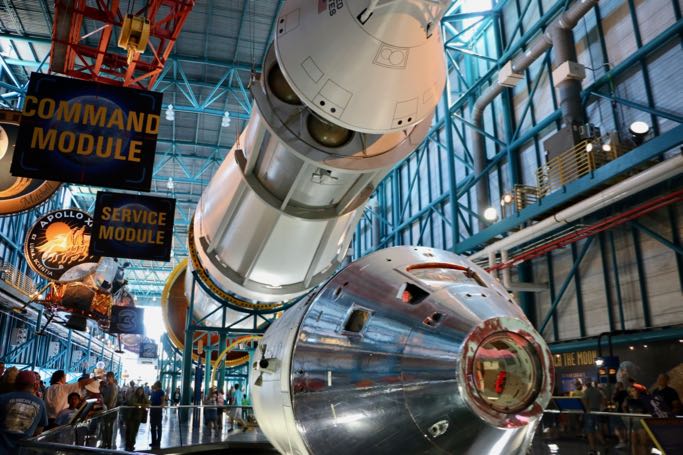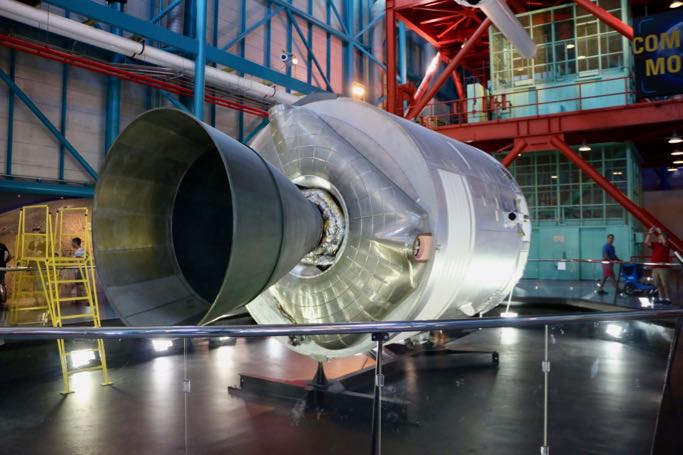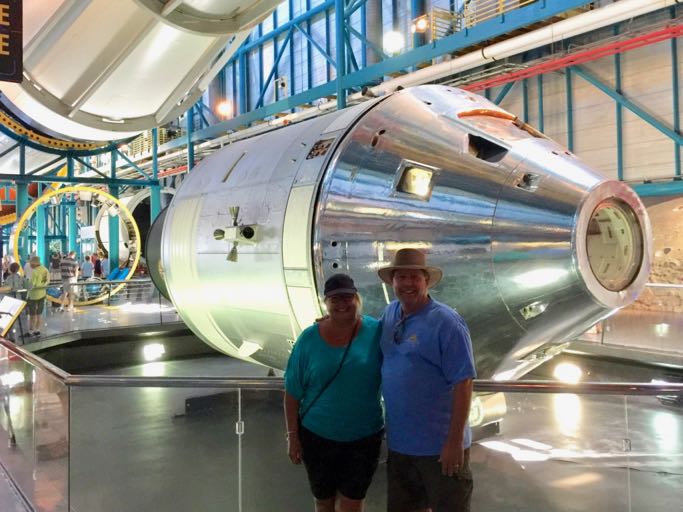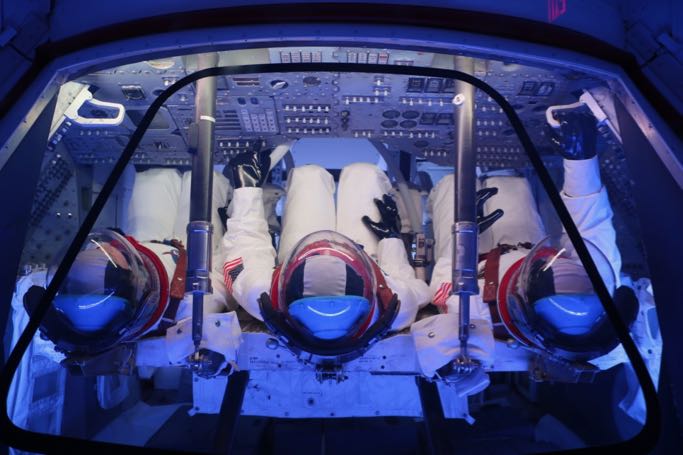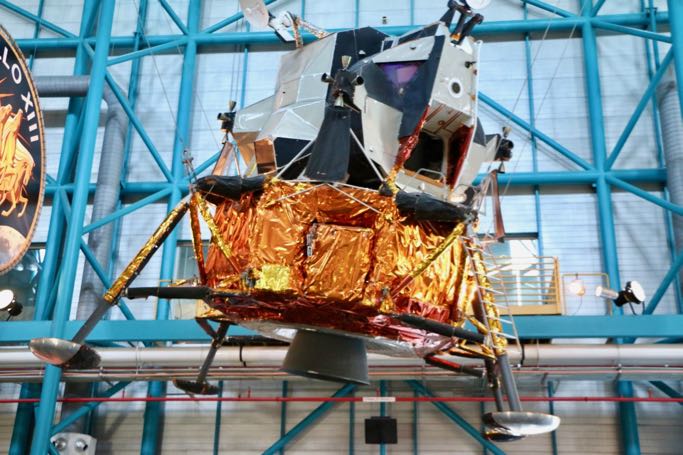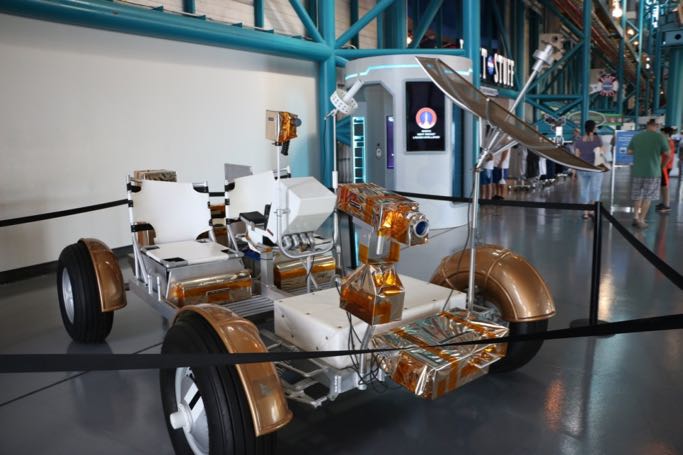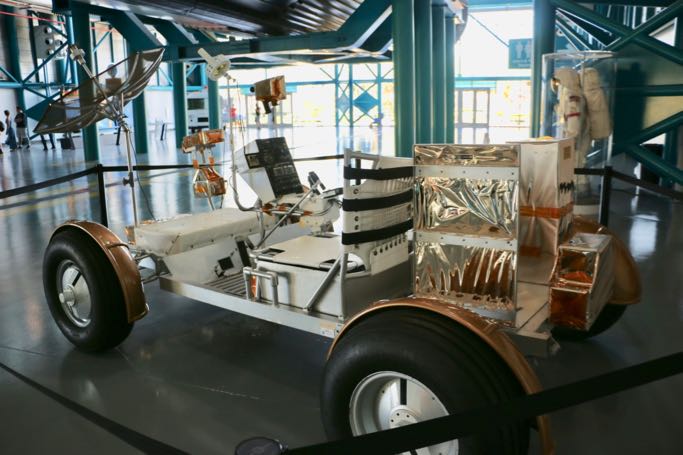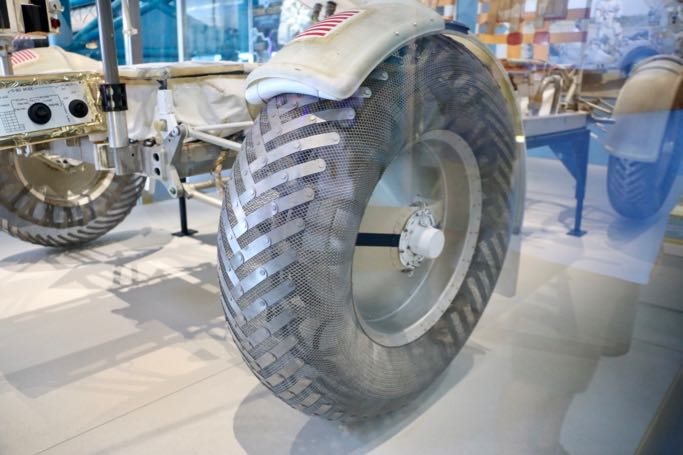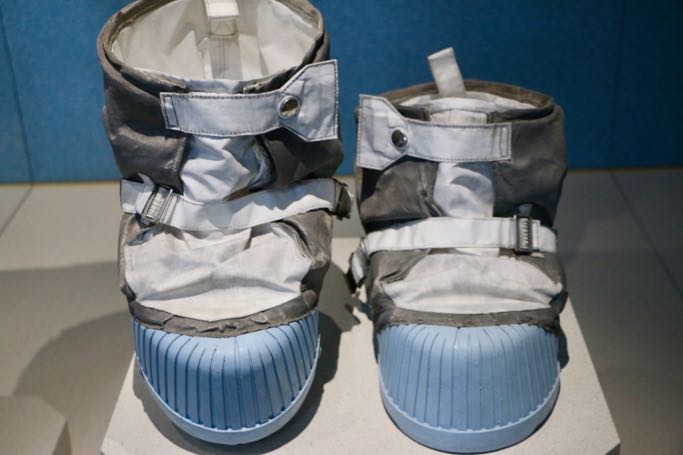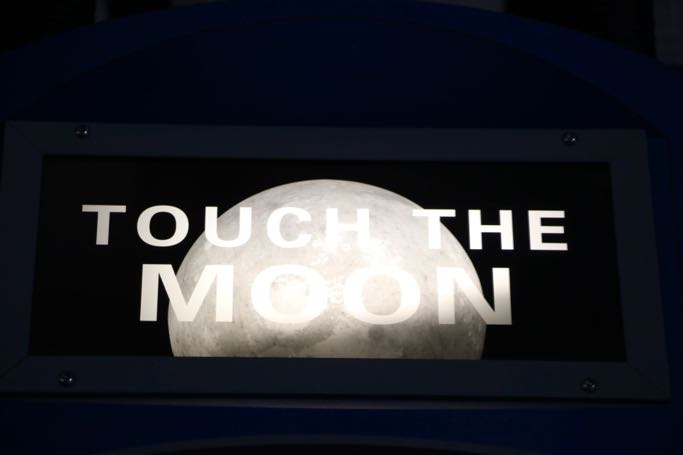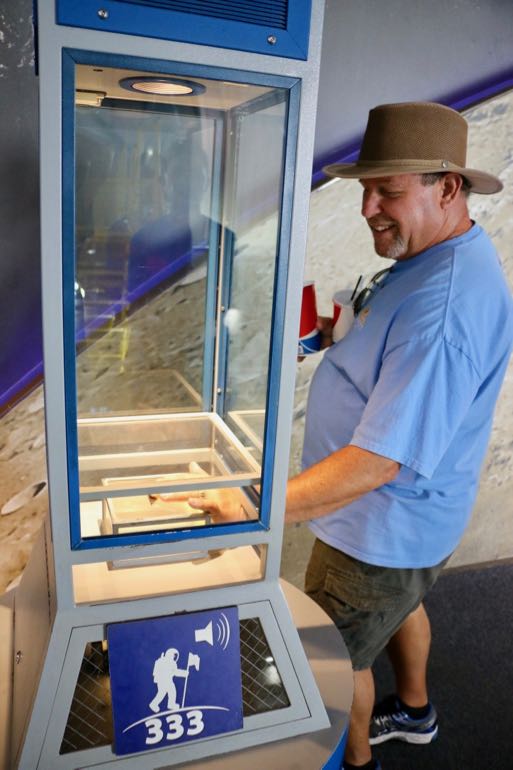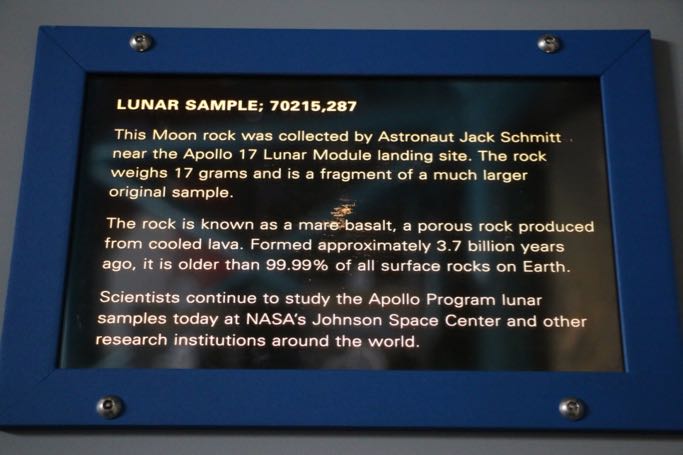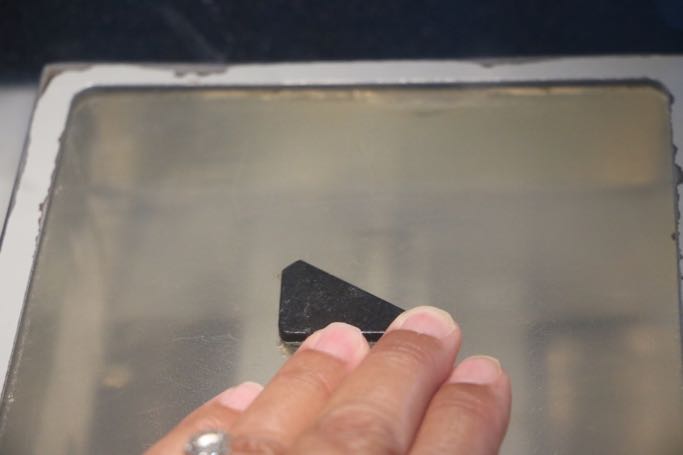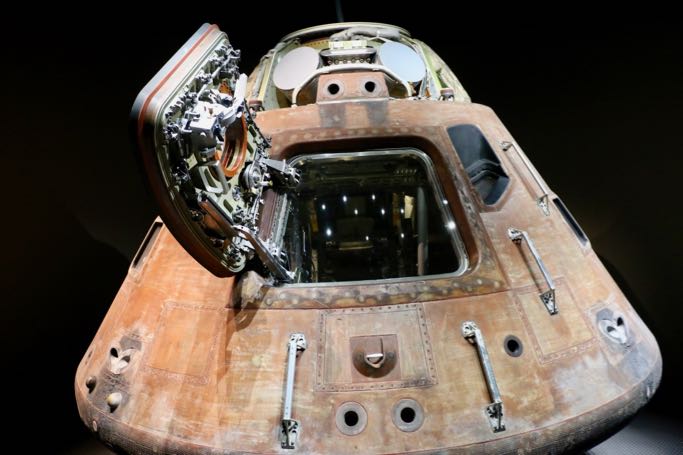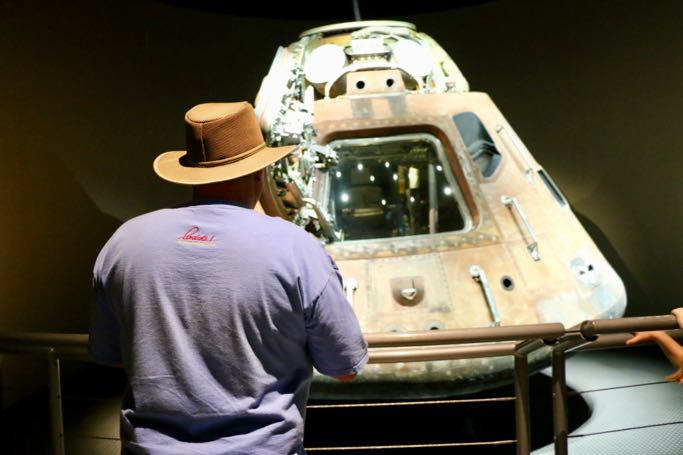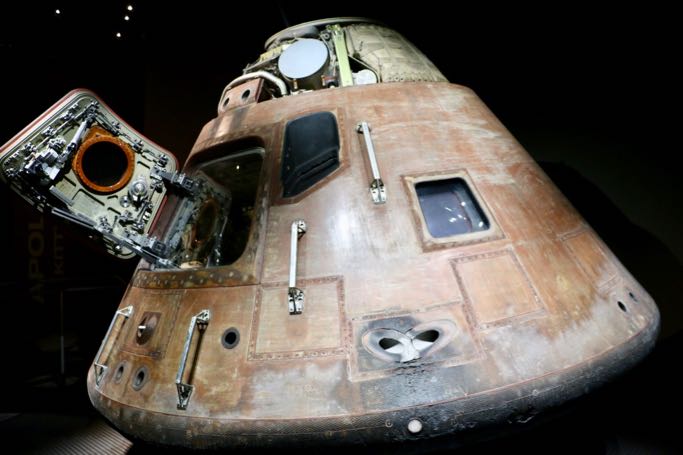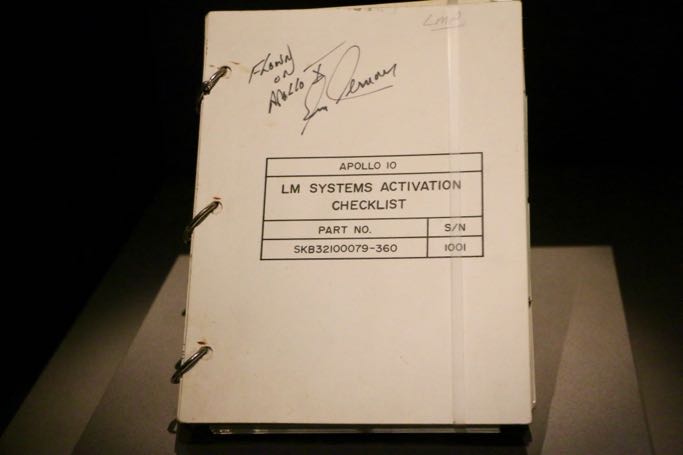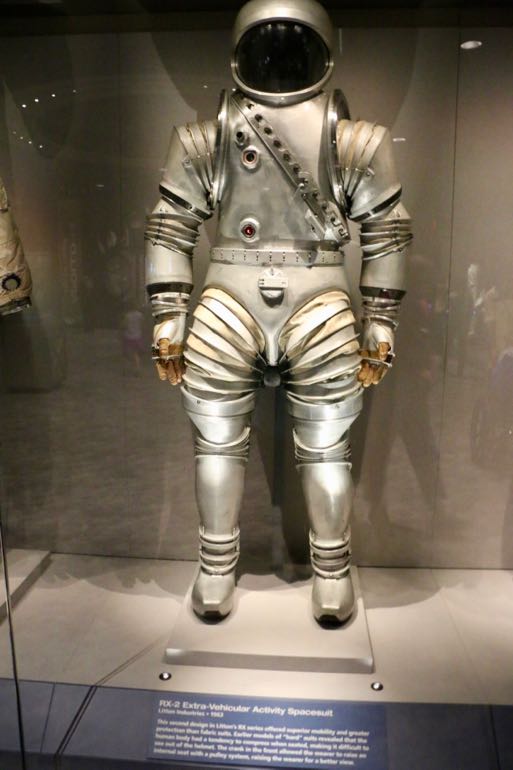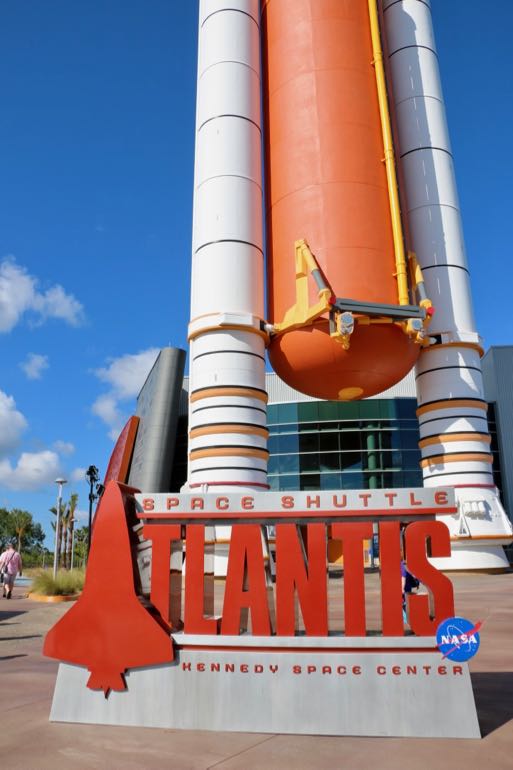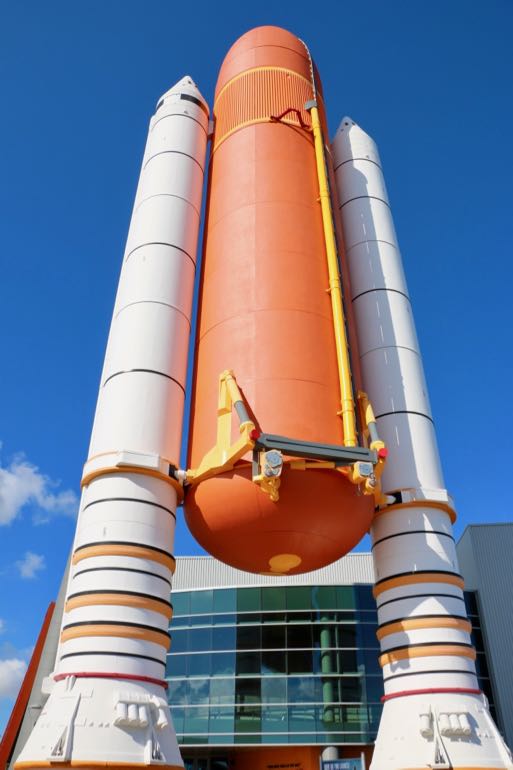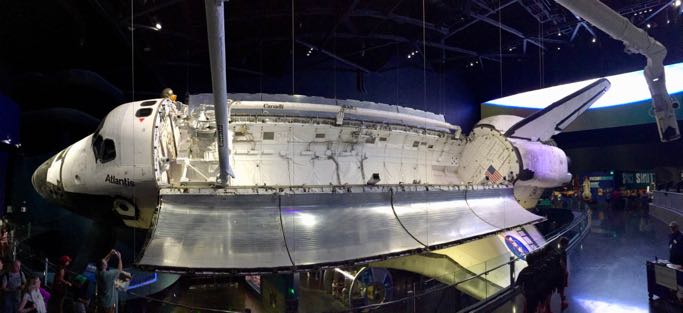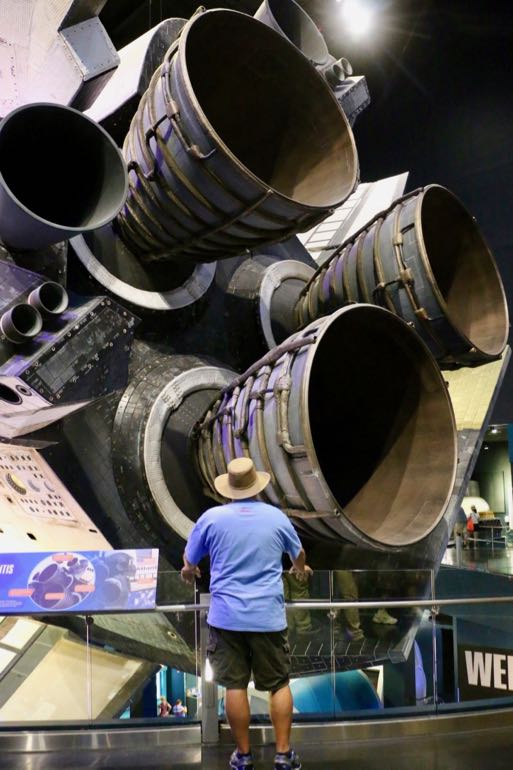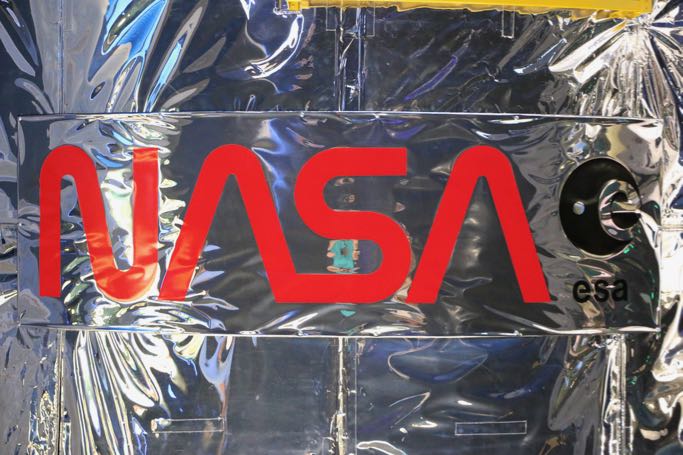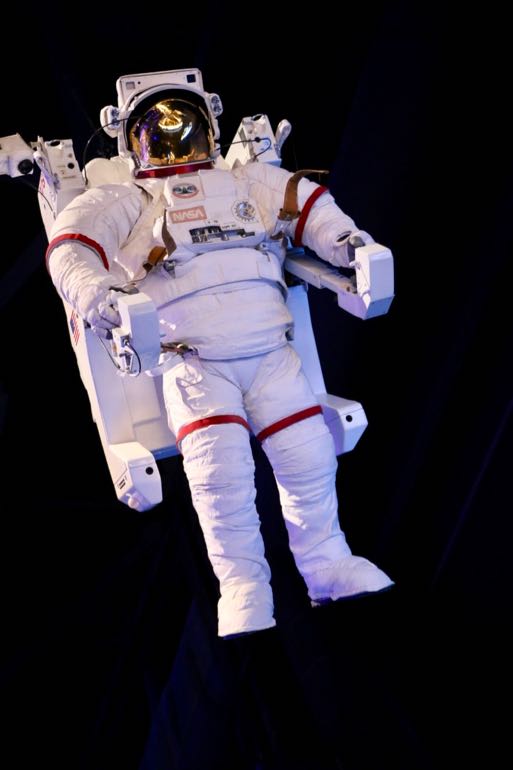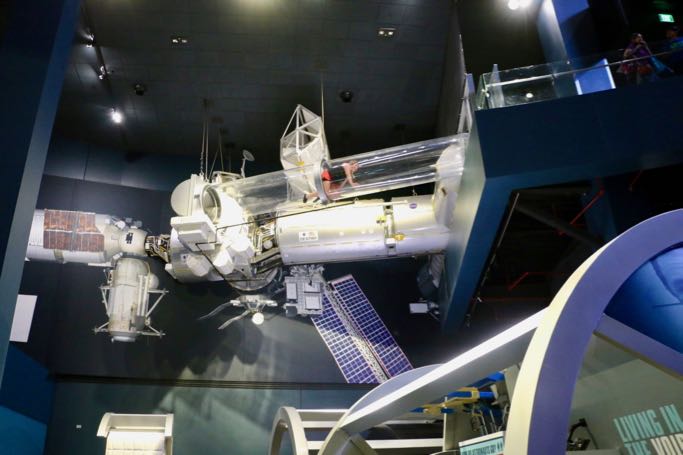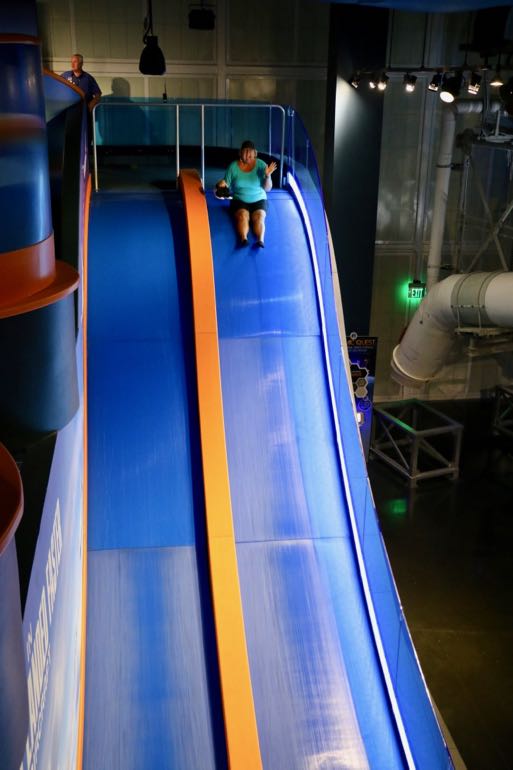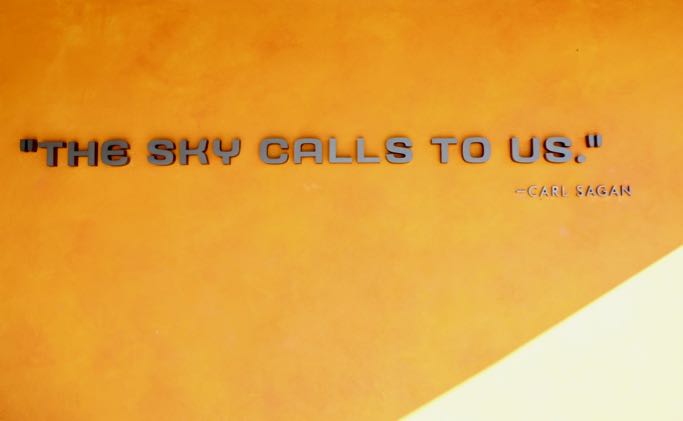We stopped for an early lunch on our way to tour Kennedy Space Center. Checking my trusty resources, I found a little spot called Causeway Diner. It’s a little family owned place in a small strip center. The food was fantastic. The only complaint was a bad thing and a good thing all at the same time. My tea and Steve’s soda tasted like bleach. That’s a bad thing. Surely the bleach was used to clean and disinfect the brewer and dispensers. That’s a good thing. Again, the food was really, really good. The service was super friendly, attentive and efficient. If we ever find ourselves on the road going north to Kennedy Space Center, we will definitely stop here again.
Filled up for the day, off we go!
Our first sight, woohoo! Another bucket list item – CHECK! The only thing that would have made our visit even more perfect would have been to have my brother, Mike, along. He’s literally a rocket scientist. He and his team just launched a spacecraft in November of last year. Currently he’s the systems engineer for a spacecraft expected to launch March, 2018. He’s going to get us tickets to Kennedy for the launch, and now that we’ve seen Kennedy, we are excited beyond words. He offered us tickets to his last launch, but we couldn’t make it and had to watch from home. As we have since the invention of the internet, and live feeds. Yep, we already have a return trip to Florida planned for next year. Fingers crossed!
The Rocket Garden is representative of the rockets used in NASA’s Mercury, Gemini and Apollo programs. To get a better idea of the size of these rockets, look at Steve in comparison. They’re MASSIVE.
The even larger, more sophisticated, gasp-worthy Saturn V rocket is housed in a facility at the furthest point on the bus tour before returning to “base”.
One of the first things we see on our tour is this long gravel covered “Crawlerway”. A “Crawler-Transporter” is used to move spacecraft from Nasa’s Vehicle Assembly Building (VAB) to Launch Area 39 . It’s covered in Alabama and Tennessee river rock to reduce the chance of sparks. Each trip completely pulverizes the rock, and a new layer is put down on the 3 1/2 mile Crawlerway after every single pass.
Unloaded, weighing 6,000,000 lbs., a Crawler-Transporter moves at a whiplashing speed of 1 m.p.h. Burning over 125 gallons of diesel fuel per mile, each 3 1/2 mile trip on the Crawlerway takes apx. 5 hours. The technology is beyond a lay-person’s understanding. The laser guidance systems, leveling systems, and power systems are mind boggling.
Our first look at a Mobile Launcher Platform, “MLP”. Notice the two rectangular openings on the bottom. That’s where the rockets’ flames burst through during launch.
Mission to Mars has several interactive exhibits, and immersive IMAX 3D films on the tour. We saved the IMAX films for another visit, and for sure with my brother Mike in tow. Can you believe he’s NEVER toured Kennedy Space Center the tourist way?! Yeah, me neither.
Our first look at the Vehicle Assembly Building (VAB). It’s exactly what it sounds like – the place where they assemble all the components that make up spacecraft and rockets.
And below, my friend, is the infamous Mission Control!
Already thrilled, we head over to Launch Complex 39 (LC-39). Originally built for the Apollo Program, then was modified for the Skylab, and then later for the Shuttle Program. LC-39 consists of three launch pads, 39A, 39B, and 39C, and is still active, now launching Space-X’s Falcon-9. Further modifications will be made to support Space-X’s Dragon and Falcon Heavy, as well as NASA’s Space Launch System for deep space exploration. I’m as giddy as any space geek can be.
There’s a two part tower system on top of the MLP. One is fixed, the other rotates around the fixed tower to access what’s inside.
Notice the mound the launch pad is on. A flame deflector under the rocket requires a depth of 40 feet, and since this is the Florida coast with a shallow water table, they can’t dig, so they build up.
Fun fact: In the Apollo launch days, each launch pad was equipped with an emergency evacuation system. A 200 foot tube ran from the MLP to a blast resistant bunker 39 feet underground. The bunker had enough supplies for 20 people to survive 24 hours. There was a cab and slide wire system to evacuate astronauts and technicians that ran from the 300+ foot tower to some 2,500 feet away from the launch pad. Of course, emergency evacuation systems are still in place, having been modified accordingly.
At the end of the first leg of our bus tour, we arrive at the Apollo Saturn V Center.
First inside, we’re treated to a fact-based re-creation of the 1968 launch of the first manned flight into orbit, Apollo 8. The consoles we see before us are the actual consoles used by Mission Control, and the footage we’re shown is actual footage from the launch and media.
And then we are lead to the take-your-breath-away Saturn V rocket, fully assembled, separated in stages.
We joined a guide explaining what we were looking at. I’m going to leave the description alone, it’s far too technical for me to even attempt (sorry Mike). Wait a minute! Did I hear a little cheer from you, dear reader? What?! Are my paragraphs-long dissertations boring you? Well, excuuuuuuuse me! Okay, fine then. What follows is giant stuff, connected to a ton of small thingies. It’s a ginormous rocket, y’all.
And now for the Apollo stuff:
Are you still with me? Good! Okay, more space stuff:
Next we went into the attached “Treasures Gallery”. I’ll just take the description from Kennedy Space Center’s website: “Esteemed as rare or precious, treasure is the fitting description of the items found in this gallery. Medals, prototypes and training gear tell the story of astronauts bound for the moon in this Smithsonian affiliated exhibit. From Alan Shepard’s moon dust covered spacesuit to the Apollo 14 crew capsule, see authentic artifacts of the Apollo moon missions.”
And a piece I consider a work of art:
It’s crazy how the early years of the space program were worthy of a collective nation stopping work and school, and gathering around a television to watch a launch, and now so few know who the astronauts are that followed the pioneers, or even if a spacecraft is launching. Networks don’t even give a mention when a spacecraft launches! Crazy!
We boarded a bus for the return trip. Back at the main complex, we went to see the space shuttle, Atlantis.
Before going in to see the shuttle, we were treated to a film, and a ta-da moment. Here’s the last few seconds of the oooh-aaah leading up to the unveiling of the shuttle:
So, I’m just gonna keep it simple, my friend. Here’s some more pics:
And for the kids:
The last thing we enjoyed was a Shuttle Launch simulator ride. No photography is allowed, so I’ll just describe it. Don’t worry, I’ll keep it brief. First you put your purses, backpacks, and any loose items in a locker. Then you climb a bunch of switchbacks in line up to the simulator, watching astronauts describe their first launch. They all tell you that this simulator is as close to the real thing as possible. Once inside, you are buckled in, the large screen opens, and you’re aboard the space shuttle you tilt on your back, taking off you shake like the dickens, a little emergency happens, you recover, and the ride leaves everyone with a big smile.
The day was getting late, so we skipped a few other things for next time. I can see how this could be a 2-day visit, if you or someone you’re with is as interested in space as Steve and I are.
I’ll leave you with a couple quotes spotted on our visit:
Keep looking up.
